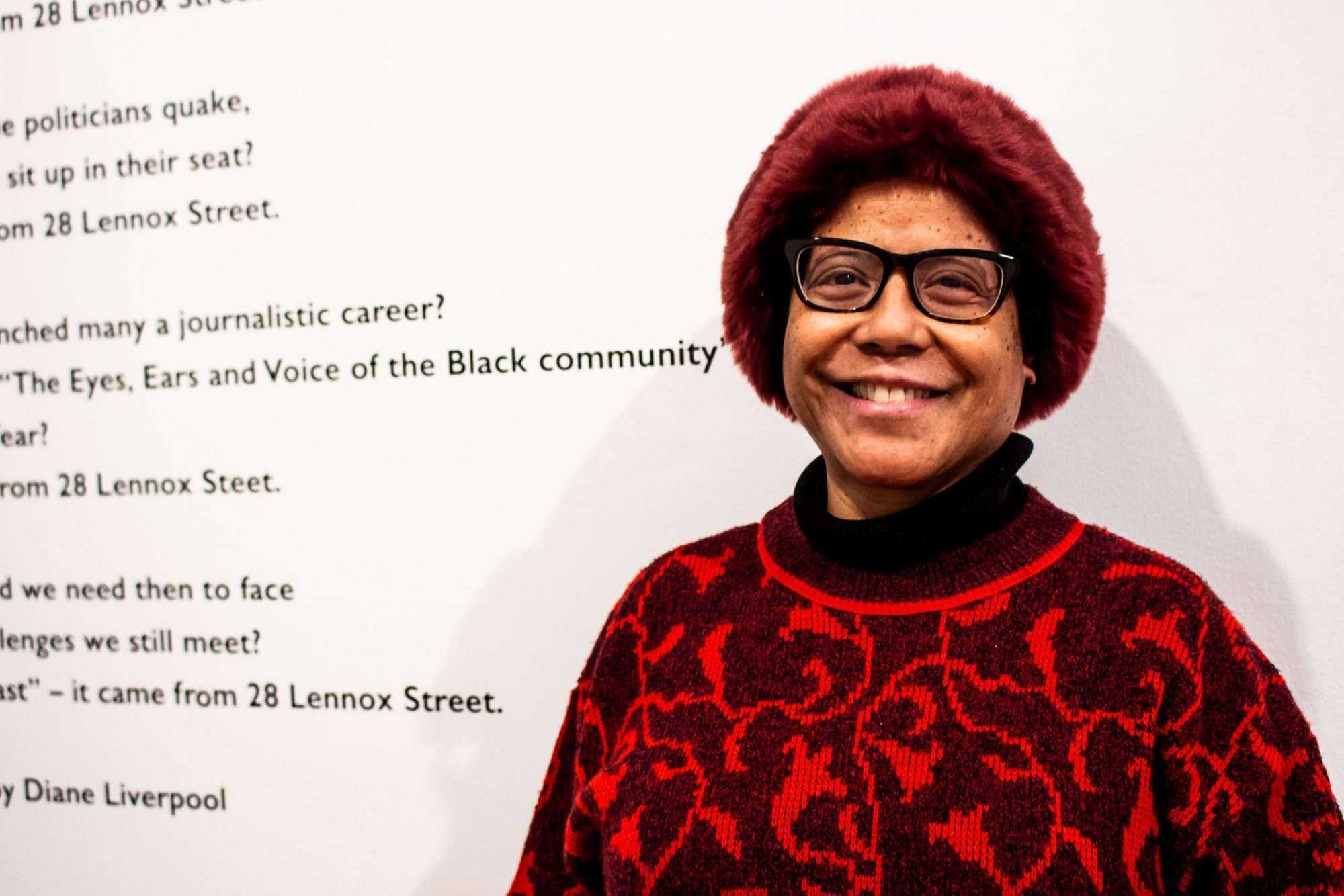BY SELINA McCALLUM
An exhibit at the Meridan Arts Centre called Ears, Eyes, Voice, brings together important visual works by black Canadian Photojournalists Jules Elder, Eddie Grant, Diane Liverpool, Al Peabody and Jim Russell from the 1970s to 1990s.
The exhibit is free to the public and open from Thursday to Sunday starting at 1 p.m. to 6 p.m. until March 8th.
It is presented by TO Live and organized and circulated by Black Artists’ Networks in Dialogue (BAND), and generously sponsored by Scotiabank.
Ariana Shaw, program coordinator of TO Live, an organization that connects three art venues in Toronto, was thrilled to see so many people add their own perspective to curator Dr. Julie Crooks tour of the exhibition on February 16th.
“People sharing their own memory of this memory, this history in Toronto, which was so lovely and so wonderful to hear because everyone has their own perspectives and I think that really kind of helps getting to know people’s perspectives and really helps create this contribution of this diverse Toronto” said Shaw.
BAND is dedicated to supporting, documenting and showcasing the artistic and cultural contributions of black artists and cultural workers in Canada and internationally. Their vision is to connect black culture to communities to inspire, enlighten and educate through the arts.
Director and Co-Founder of BAND, Karen Carter, traveled around the world meeting black photographers from the UK, London and Ghana. She wanted to showcase the work of black photojournalists in Toronto too.
“We wanted to show the Canadian position within that context, looking at the international and so the research that Dr. Julie Crooks did led us to these five photojournalists who were shooting and documenting black community life both at local newspapers. As you saw, Contrast, Share, and then in mainstream newspapers like the Toronto star and Globe and Mail,” said Carter.
The collective archive of black photojournalists reveals a comprehensive visual record. They focused on politicians, community members, activists, and protesters, as well as entertainers and athletes. They tell a remarkable range of stories and histories about black lives and experiences from that time.
Dr. Crooks contacted Al Peabody to help with the introduction to the other photographers. She says that all the photos convey an important message.
“We’ve always been here, and that these photographers document a specific moment in Canadian history about black communities, their struggles and celebrations,” said Dr. Crooks.
Photos from Miss Black Ontario were also included in the exhibit.
“Miss Black Ontario was a way to encourage black women who were not involved in the mainstream pageant system. It was a way to recognize their own. I know it was very controversial because it’s still about the objectification of women based on how they look and body size. I think it was a way of recognizing black women, some for their talents and aspirations,” said Dr. Crooks.
The curator pays homage to platforms that gave black communities a voice like newspapers Share, Contract and the Burning Spear.
“It allowed people to find out what was happening in parts of Africa, what’s happening locally and everything in between because those stories were not part of the Canadian mainstream story or narrative, so you kind of looked to your own to get those stories,” said Dr. Crooks.
Dr. Crooks feels that now mainstream media has shifted its lens to show more representation and there are a lot more digital platforms for larger communities. She feels that the acknowledgement of black art and people need to be ongoing, and not just in one month.
“I think we need to caution that it isn’t only about one month, that we should always be inserting ourselves and thinking about ourselves throughout the year and making that willful in all of the things that we do,” said Dr. Crooks.
Her favourite photo is of Peter Tosh relaxing backstage after a concert at O’Keefe Centre in 1981 which was taken by Liverpool.
Between 1979 to 1981, Liverpool’s presence was ubiquitous as she covered both local and international artists and performers for Contrast. Liverpool was very aware of her status as the only black female photojournalist and photo editor. She would often gain rare backstage access, and capture candid and familial moments of visiting musicians.
Ears, Eyes, Voice: Black Canadian Photojournalists 1970s–1990s takes the motto of Contrast newspaper as its inspiration. The exhibition situates Toronto’s multidimensional black experience by using photography as a powerful weapon.
Liverpool mentions why people should come to see the exhibit.
“It’s a blast from the past. The thing is the issues are still present so it’s still very much relevant. Come out and see,” said Liverpool.

